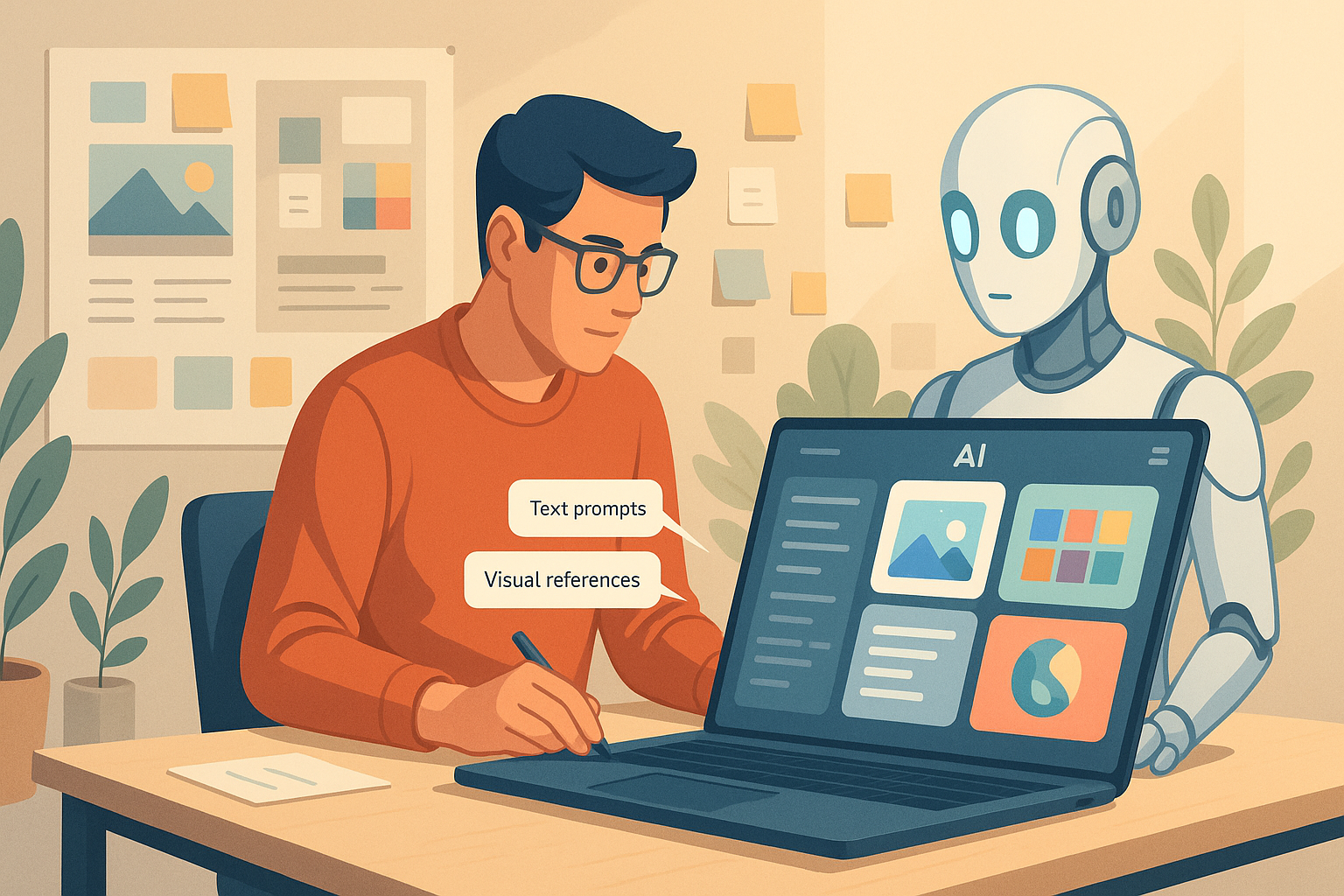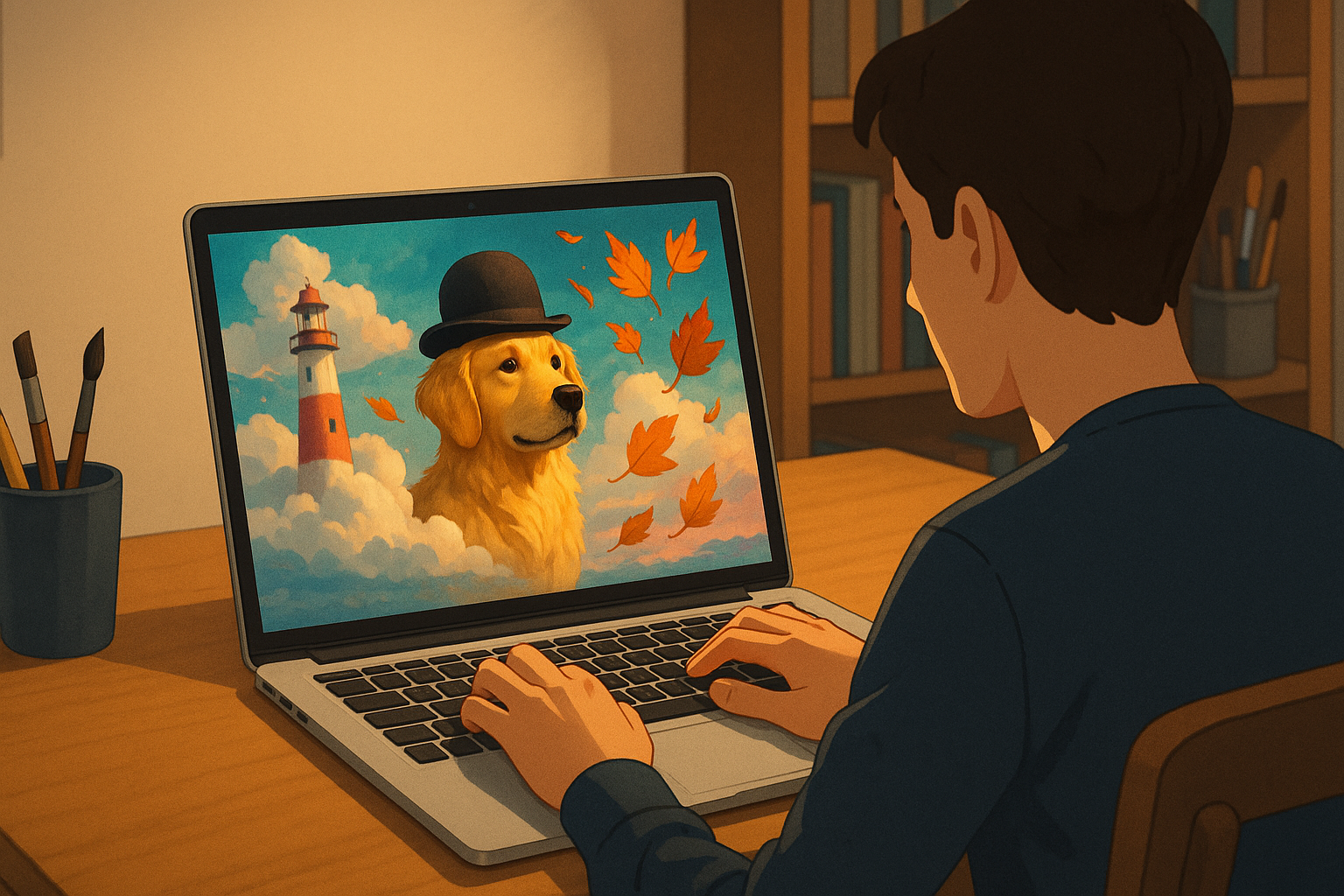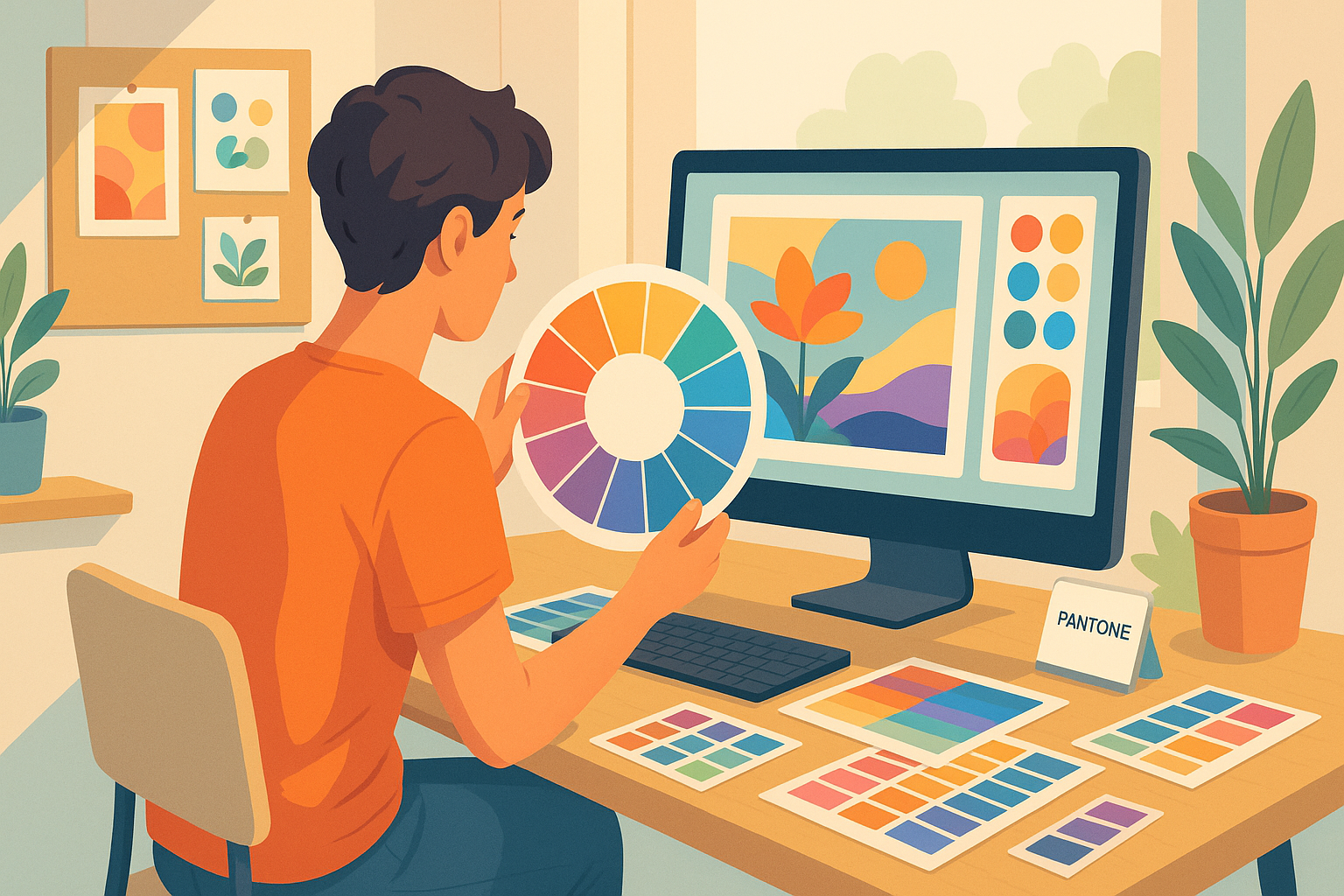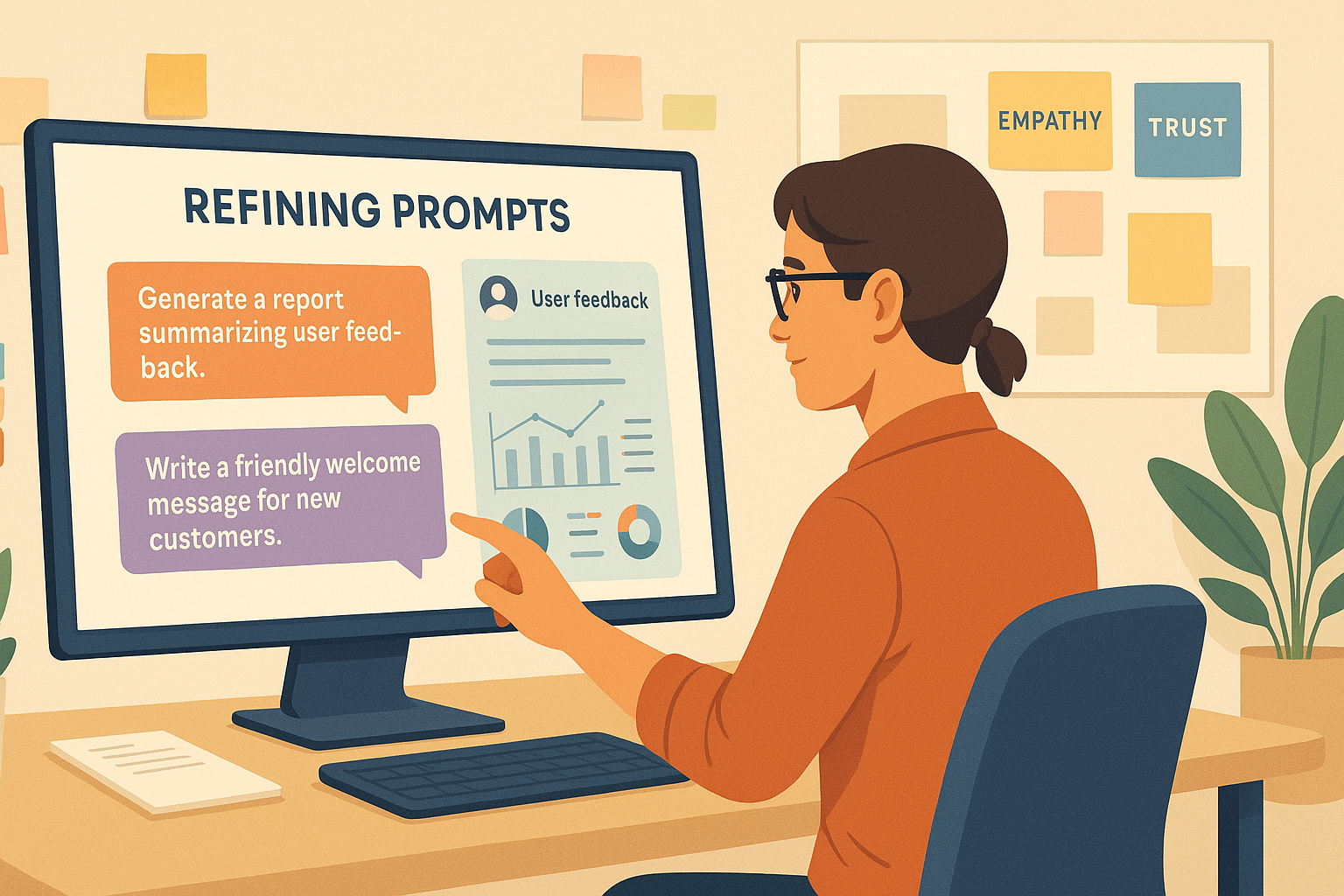Crafting the Perfect Prompt: A Designer’s Perspective

Why Designers Should Master Prompt Crafting
In the age of AI-powered creativity, the difference between mediocre outputs and extraordinary results often comes down to one thing: the prompt. Whether you’re generating images, copy, or UI components, crafting the perfect prompt is a skill every designer should master. This guide explores how prompts can accelerate your workflow, enhance consistency, and unlock new levels of innovation in your creative projects.
Understanding Prompts in Creative Work
What Is a Prompt?
A prompt is a clear instruction or request you give to an AI tool to guide its output. It can be as simple as “Generate a minimalist logo” or as detailed as “Create a warm, friendly hero image for a healthcare website with a family illustration in soft blues and greens.” The specificity and clarity of your prompt determine how close the AI comes to your vision.
The Role of Prompts in AI-Powered Design
Prompts act as a bridge between human creativity and machine learning. They translate your design intent into parameters the AI can understand, blending your direction with the AI’s trained knowledge. This collaboration accelerates ideation and allows you to produce high-quality assets quickly.
How Prompts Influence Outcomes
A well-crafted prompt sets clear boundaries and expectations, reducing the need for endless revisions. Conversely, vague or contradictory prompts can lead to inconsistent or unusable results. The more context and direction you provide, the more effectively the AI can deliver outputs aligned with your goals.
The Psychology Behind Effective Prompts
Clarity and Focus in Communication
Much like a creative brief, an effective prompt is concise, specific, and goal-oriented. When you give clear instructions, you remove ambiguity, making it easier for the AI to align with your intent. A focused prompt leads to focused results.
Reducing Cognitive Load for Better Results
AI tools process enormous amounts of data. Your prompt simplifies this complexity by narrowing the AI’s scope to what matters most. Clear direction reduces the model’s “cognitive load,” helping it produce more relevant and accurate outputs.
Setting Constraints to Drive Creativity
Paradoxically, constraints can unlock creativity. When you define parameters—such as color palette, tone, or style—you force both yourself and the AI to explore innovative solutions within a clear framework. This approach often leads to more distinctive and memorable designs.
Elements of a Well-Crafted Prompt
Clear Objectives
Every strong prompt begins with a clear objective. Are you trying to create a logo, generate microcopy, or design an entire layout? State your goal upfront to guide the AI’s focus and avoid confusion. For example: “Generate a modern landing page layout for a SaaS product targeting small business owners.”
Tone, Style, and Audience
Specifying tone and style helps the AI align its output with your brand. If your audience is professional, playful, or minimalist, include that in your prompt. For example: “Write a friendly, conversational tagline for a children’s educational app.”
Visual and Contextual References
Prompts work best when they reference concrete examples. You can mention colors, styles, or comparable brands to give context. For instance: “Create an illustration in the style of flat design, similar to Dropbox branding, using a pastel color palette.”
Prompting for Visual Design
Image Generation with AI Tools
AI image generators like DALL·E and Midjourney can produce stunning visuals when you guide them with detailed prompts. Instead of simply typing “website hero image,” enrich your request: “Generate a hero image showing a woman working remotely at a minimalist desk with soft natural lighting.”
Color Palettes and Mood Boards
Prompts can also help you define mood and emotion. Specify desired color palettes or emotions to evoke: “Create an abstract background in calming blues and greens to convey trust and relaxation.” This ensures the AI produces visuals that align with your brand identity.
Examples of Effective Visual Prompts
Here are a few examples designers might use:
- “Generate an icon set in a flat, monochrome style suitable for a fintech app.”
- “Create a banner illustration of a diverse team collaborating in a bright, modern office.”
- “Produce a minimalist logo inspired by geometric shapes and soft gradients.”
These examples provide style, context, and specificity that improve output quality.
Prompting for Copy and Microcopy
Crafting Brand-Consistent Text
AI writing assistants excel when you guide them with clear voice and tone. Specify the reading level, target audience, and mood: “Write a 50-word product description in a warm, accessible tone for eco-conscious shoppers.”
Writing Calls to Action
Prompts can help you generate high-converting CTAs: “Generate five short calls to action encouraging visitors to sign up for a free trial, using persuasive, friendly language.” Clarity ensures the AI tailors its suggestions to your goals.
Balancing Simplicity and Personality
Effective microcopy is clear yet distinctive. Your prompt should strike this balance: “Write an error message that is polite and reassuring, using the brand’s playful voice.” Small details in the prompt produce big improvements in user experience.
Prompting for Prototyping and UI Components
Generating Wireframes and Layouts
Designers can use prompts to create wireframes and interface mockups. For example: “Generate a wireframe for a mobile e-commerce checkout page with a progress indicator and minimal form fields.” Clear prompts help AI tools output layouts that match your design goals.
Specifying Interactions and Behaviors
Prompts can guide not just visual elements but also user interactions: “Create a prototype screen with a collapsible FAQ section and a sticky footer containing contact options.” Describing interactions ensures outputs are practical and aligned with real user flows.
Aligning Prompts with Design Systems
If your organization uses a design system, reference it directly: “Generate UI components styled in accordance with the Material Design guidelines.” This alignment helps maintain consistency across your product ecosystem.
Iterating on Prompts
Reviewing AI Outputs Critically
Just because an AI generates an output doesn’t mean it’s ready for production. Review results with a critical eye, checking for alignment with brand, usability best practices, and project goals.
Refining for Specificity
If the first result isn’t quite right, refine your prompt: “Instead of bright colors, use muted tones,” or “Make the headline more conversational.” Small adjustments can make a big difference in output quality.
Documenting Successful Prompt Patterns
Keep a library of effective prompts for different tasks—landing page copy, icons, error messages, and more. This resource saves time and provides a baseline for future projects.
Common Prompting Mistakes Designers Make
Overloading Instructions
Adding too many requirements in one prompt can confuse AI models. For example, asking for multiple styles, tones, and objectives in a single sentence often leads to muddled results. Break complex requests into simpler steps instead.
Being Too Vague
Generic prompts like “Generate an image” or “Write some copy” rarely produce useful outputs. Always include context, audience, tone, and desired outcomes to guide the AI effectively.
Forgetting User Context
Design is about serving users. Make sure your prompt considers who will see and use the content: “Write onboarding instructions for first-time users with no technical background.” User-focused prompts create more meaningful experiences.
Case Studies: Designers Using Prompts Effectively
Branding Agencies Creating Visual Concepts
Branding agencies often use AI prompts to brainstorm logo variations and mood boards. By combining precise style guidelines with clear objectives, they produce dozens of viable concepts in less time than traditional workflows.
Startups Generating Marketing Assets
Early-stage startups frequently leverage prompt-driven AI to create landing page copy, product descriptions, and ad visuals. With tight budgets and fast timelines, prompt mastery enables small teams to scale creative output rapidly.
Freelancers Automating Repetitive Tasks
Freelance designers and writers use prompts to automate routine content—like microcopy, social media captions, and template designs—freeing up time for strategic work and custom projects.
Tools for Crafting Better Prompts
AI Image Generators (DALL·E, Midjourney)
These tools turn text prompts into high-quality visuals. Experimenting with specificity, style references, and color descriptors can dramatically improve results.
Copywriting Assistants (ChatGPT, Jasper)
AI writing tools excel when you provide detailed instructions on tone, audience, and length. They’re especially helpful for drafting marketing copy, product descriptions, and email sequences.
Design Prototyping Tools
Platforms like Figma and Adobe XD increasingly integrate AI features that generate layouts and design variations based on prompt-like instructions, speeding up prototyping workflows.
Ethical Considerations
Transparency in AI-Generated Content
Be upfront when content is AI-assisted, especially for commercial or client-facing materials. Clear disclosure helps build trust and avoids misleading stakeholders.
Avoiding Plagiarism and Bias
Always review AI outputs for originality and fairness. Since models learn from large datasets, they can inadvertently reproduce biased or derivative content.
Respecting Intellectual Property
When referencing brand names, proprietary styles, or protected visuals in prompts, ensure you have the right permissions. Ethical prompt crafting respects creators and copyright laws.
The Future of Prompt-Driven Design
Multimodal Prompting
AI systems are evolving to process prompts that combine text, image references, and even voice. This multimodal capability will unlock richer, more nuanced outputs.
Personalized Design Assistants
Future tools will learn your style preferences over time, making prompts more like conversations with a creative partner than static instructions.
Scaling Creativity Responsibly
As prompt-driven design scales, designers must balance efficiency with thoughtfulness, ensuring automation enhances rather than dilutes creative integrity.
Practical Steps to Improve Your Prompts
Start with Clear Intent
Define exactly what you want to achieve before drafting your prompt. The more clarity you have, the better the AI’s results.
Test and Iterate
View prompts as drafts. Experiment, tweak, and refine until you find the phrasing and detail level that consistently delivers quality outputs.
Build a Prompt Library
Create a repository of proven prompts for common design tasks. This library will save time, maintain consistency, and support collaboration across teams.
Conclusion: Embracing Prompts as Creative Tools
Prompt crafting isn’t just a technical skill—it’s a creative practice that empowers designers to harness AI with intention and artistry. By mastering clear communication and thoughtful iteration, you can transform prompts into powerful tools for ideation, production, and innovation. In the era of AI-assisted design, great prompts are your new superpower.
…
Frequently Asked Questions
What makes a good design prompt?
A good prompt is clear, specific, and contextual. It includes objectives, style references, audience considerations, and any necessary constraints.
How do prompts improve efficiency?
They focus the AI’s output, reducing revisions and accelerating production timelines, so you can create more in less time.
Can prompts replace human designers?
No—prompts are tools that augment creativity, not replace it. Human judgment, taste, and strategy remain essential.
What are the risks of AI-generated design?
Potential risks include bias, plagiarism, overreliance on automation, and loss of unique brand voice. Always review outputs carefully.
How can I measure prompt effectiveness?
Track success by evaluating clarity, consistency, output quality, and how often the first drafts meet your objectives without major revisions.
Editor’s Choice
Get started with our best stories
Get all the latest posts delivered straight to your inbox.





это воплощение изысканного стиля и безукоризненного качества.
Мебель высокого класса от известных дизайнеров — это не просто предметы интерьера, а настоящие произведения искусства. Каждая деталь такой мебели продумана до мелочей и отражает уникальный стиль создателя. Премиум мебель становится все более популярной среди ценителей качества.